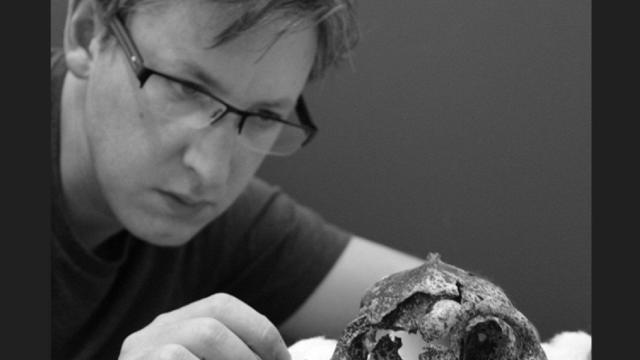
Jesse Martin: image supplied
The genus Paranthropus includes at least three distinct species, (P. aethiopicus, P. boisei, and P. robustus), that share a unique suite of primitive and derived characteristics including small brains, and a hypertrophic masticatory apparatus. The relatively large sample of P. robustus and P. boisei cranio-dental remains provides a unique opportunity to further investigate population level variation within Plio-pleistocene hominin species, such as degrees of sexual dimorphism and ontogenetic trajectories. However, recent advances in geochronology have led to the redating of Paranthropus bearing sites such as Drimolen, Swartkrans, and Kromdraai, and have provided some evidence to suggest that the combined P. robustus sample spans at least ~250Ka. The 2018 discovery of the DNH 155 and DNH 152 crania from Drimolen demonstrate that the ~2.0Ma P. robustus sample from Drimolen is morphologically distinct compared with the ~1.8 Ma P. robustus sample from Kromdraai and Swartkrans. Consequently, hypotheses that have historically cast these differences as the size correlated effects of sexual dimorphism are not supported, whereas microevolutionary change within a single evolving lineage stands as a viable alternate hypothesis. This work has implications for reinterpreting the variation within P. boisei, and within all other hominin taxa where high degrees of intraspecific variation has been attributed to sexual dimorphism.
About the Speaker
Dr Jesse Martin is a post-doctoral research fellow at the University of Cambridge. He has excavated at the site of Drimolen in South Africa and within the Turkana Basin in Kenya.
Zoom details: https://anu.zoom.us/meeting/register/ILdyf8d1QC22J3J80ZAaUg
Presented as part of the School of Archaeology and Anthropology's 2025 Biological Anthropology Research (BAR) Seminar series
Location
Speakers
- Dr Jesse Martin, Cambridge University
Contact
- Katharine Balolia
File attachments
| Attachment | Size |
|---|---|
| BAR-Jesse-Martin-Poster_0.pdf(255.17 KB) | 255.17 KB |